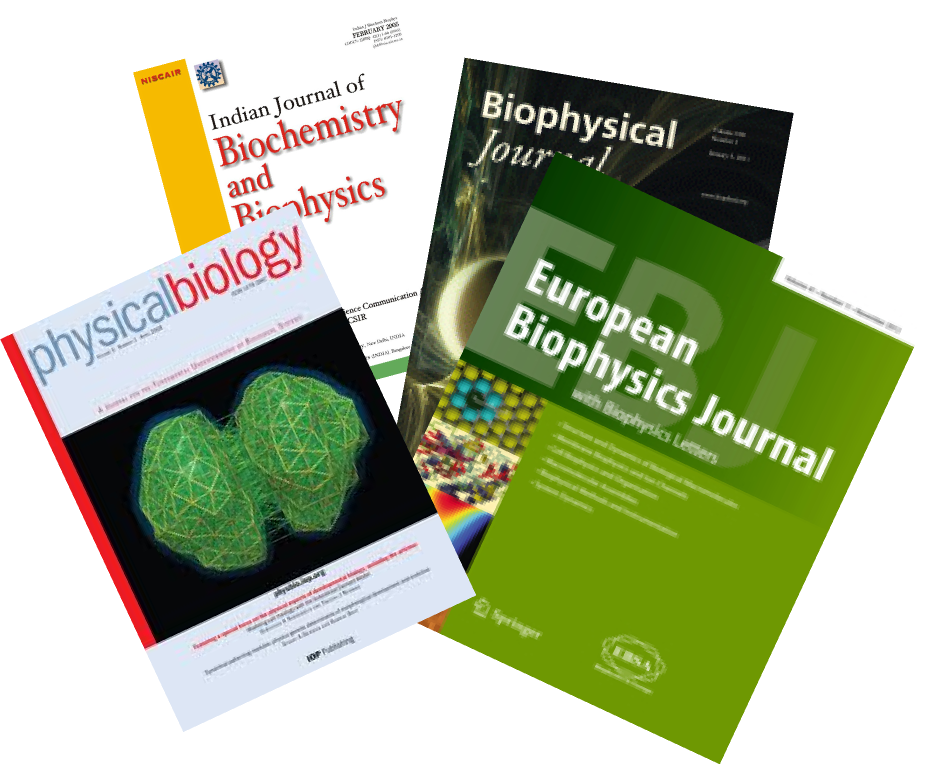Research paper reading assignments
- Reynolds Number[24 Jan 2019]:
Purcell 1977 Life at Low
Reynolds Numbers. The famous reprint of a paper that appeared
in a book "The Physics of our World"based on a talk given by E.M.
Purcell at a Symposium in honour of Victor Weisskopf.
- Centrifugation principles [31-Jan-2019]:
Investigate the principles of cell-centrifugation by building one.
We will follow the procedure described by Bhamla et al. (Manu
Prakash's lab in Stanford) to assemble and test the "toy
centrifuge", by constrasting the result against a motorized
lab-centrifuge and a crank-power centrifuge.
READING:Bhamla et
al. (2017) Hand-powered ultralow-cost paper centrifuge. Nat.
Biomed. Engg. 1: 0009. Basic protocol-
assemble the centrifuge using the top lid of a 90x15 mm petri dish,
assemble the harness using nylon fishing thread and mount the
sample in burner-fused capillary tubes (TLC). Compare Hematocrit
%age. Document your findings in a 1-page report to
be uploaded in the GoogleClassroom.
- Diffusion and measuring it: Conrad W. Mullineaux, Anja
Nenninger, Nicola Ray, and Colin Robinson (2006) Diffusion of Green
Fluorescent Protein in Three Cell Environments in Escherichia Coli.
J. Bact. Vol. 188, No. 10, p. 3442- 3448 [PDF]
- Crowding: [??-??-2019] McGuffee & Elcock (2010)
Diffusion, crowding and protein stability in a dynamic molecular
model of the bacterial cytoskeleton. PLoS Comp. Biol. Vol. 6,
e1000694[PDF]
- Brownian Ratchets [Paper reading: ??-??-2019] Astumian D.
(1997). Thermodynamics and Kinetics of a Brownian Motor. Science
276.[PDF]
- Protein folding Minton, A. P. (2000). Effect of a
concentrated 'inert' macromolecular cosolute on the stability of a
globular protein with respect to denaturation by heat and by
chaotropes: a statistical-thermodynamic model. Biophys. J. 78,
101-109.[PDF]
- Molecular motors: Bormuth et al. (2009). Protein
friction limits diffusive and directed movement of kinesin motors
on microtubules. Science 325, 870.[PDF] and supplementary material
- Tissue mechanics: G Forgacs, R A Foty, Y
Shafrir, and M S Steinberg (1998)Viscoelastic properties of
living embryonic tissues: a quantitative study. Biophys J. 1998
May; 74(5): 2227-2234.
- Stem cells: Engler et al 2004 The role of stiffness in stem
cell differentiation.
Assignments
- Assignments will be announced on the google-classroom site.
Laboratory protocols
- Building
a paper centrifuge [31-Jan-2019] for
hematocrit estimation: Based on the paper by Bhamla et
al. (2017) The lab will involve critically evaluating the
description of the device, claims made in the paper and attempting
to reproduce the result- namely cell separation in 1.5 min. [LAB02-PROTOCOL][Python notebook for fitting]
- Measuring diffusion (Perrin's experiment) [13-Feb-2019] [LAB01-PROTOCOL]
- Date/Time of lab: 13 February 2019 @0940h
- Submission date/time: 14-02-2019 (in class)
- Python code for [1D Gaussian
fitting]
|
